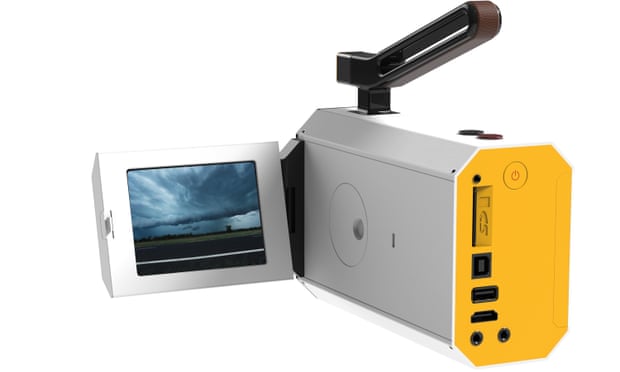While Kodak’s name has become synonymous with analog film–and all its nostalgia and industrial failings–the company has introduced a product last month that feels decidedly new: the half-analog, half-digital hipster-geared Super8. This reinvented mainstay still shoots film but comes with an LCD viewfinder and uploads your film to the cloud when mailed back to Kodak. For hobbyists and artists who still want to use film but find the process too expensive and cumbersome, this could be a game changer. It’s also foreseeable that other tech companies follow suit and introduce hybridized analog-digital gadgets, as well.
Here’s David Sax for the New Yorker below.
Amid the giant televisions, Bluetooth-enabled baby socks, and virtual-reality headsets at the Consumer Electronics Show in Las Vegas earlier this month, Kodak calmly introduced a more low-key device. Its new Super 8 camera, which will go on sale this fall for a base price of four hundred dollars, is a reimagining of the analog Super 8 format that Kodak invented, in 1965. The new camera’s image-capture process remains relatively unchanged from the original design (light enters the lens and exposes the film), but the company has added a few modern digital features to this updated version. It will include a foldout LCD viewfinder and a computerized menu where light, exposure, and other variables can be controlled, and the audio will be simultaneously recorded onto a digital memory card, for later editing. This hybridized model extends to post-production as well: shoot your film and drop it in the mail, and Kodak processes it into negatives that you can display via a projector, digitally scans the footage, and uploads it to a cloud-based service where you can download and share it.
For a company like Kodak, this has meant looking beyond the surrounding tech push to revisit an earlier, successful product, and bringing it to what appears to be a simmering market. During an interview at C.E.S., Kodak’s C.E.O., Jeff Clarke, cited an “analog renaissance” as one of the drivers behind the new Super 8 camera. He was alluding to the resurgence, especially among younger consumers, of analog technologies like vinyl records and board games. In a world where digital formats are ubiquitous and often breathlessly promoted, the more restrained, tactile charms of analog goods appeal to a certain subset of consumers.
As a result, if you bought into a record-pressing plant, watchband factory, or a board-game café when those markets were facing serious technological disruption a decade ago, you’ve likely seen your investment grow significantly. According to Nielsen Soundscan, Americans bought nearly twelve million vinyl records in 2015, an increase of more than twelve hundred per cent since 2006. Fujifilm, meanwhile, projects that it will sell more than five million Instax instant-film cameras this year globally, compared to just under a million in 2010. The lesson appears to be that, eventually, disrupted businesses can settle into highly profitable niches: candles, bicycles, and fireplaces were all displaced by better technologies at one point, and yet companies make billions, and grow consistently, by manufacturing and selling these goods each year.
*Image of new LCD Super8 via the Guardian
